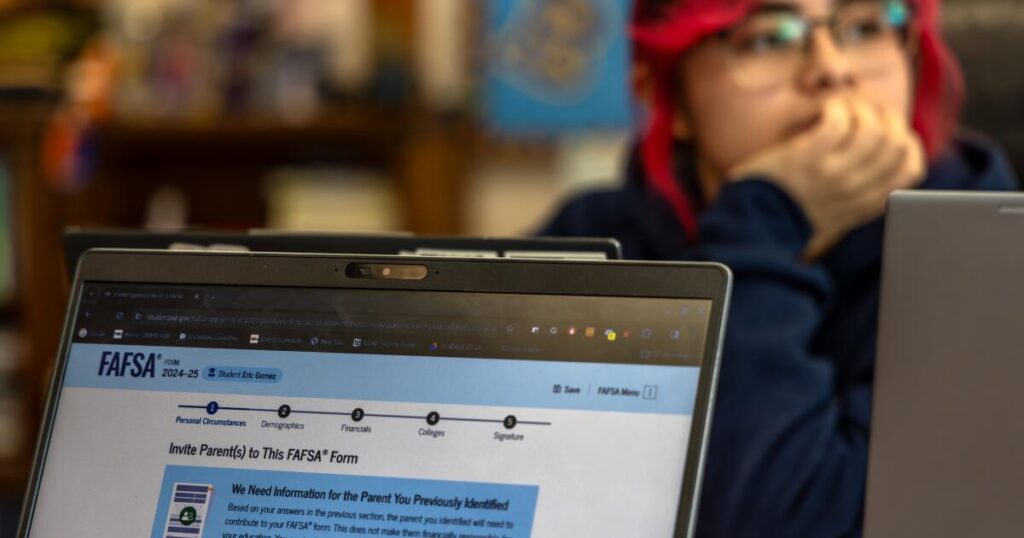[ad_1]
The federal government had supposedly made it much easier to apply for college financial aid. Except there was a glitch and students could not access the new online tool they needed. Applications were delayed by months and the numbers of students seeking aid plunged.
That’s the scene in 2024. No, wait, that was 2017. Actually, it’s both.
It seems as though each time the dreaded Free Application for Federal Student Aid is made easier, it (temporarily) gets a lot worse. Never has the problem been bigger than this year, when colleges have been forced to put off their application deadlines to allow more students to work their way through the impossibly mangled FAFSA system, when they can at all.
Students are getting stuck in repeating loops, or told by the website that they already have accounts when they don’t, and if they try to access this unheard-of account, they can’t. Some parents who don’t have Social Security numbers find they can get through the system without one. Others can’t. School counselors who try to help their students get error messages but no indication of what the problem is or how to overcome it. The U.S. Education Department, which is responsible for the FAFSA, has set up help lines, but the lines are swamped with calls and many students can’t get through. As a result, the number of applications is half what it normally would be at this point.
This week, U.S. Education Secretary Miguel Cardona said the department would soften many of the requirements for income verification, a complicated process for colleges that shouldn’t be necessary anyway, since the new system uses families’ federal tax returns. He’s also lowering other bureaucratic hurdles.
It’s a good start but not nearly enough. Cardona should hire a host of quickly trained people to answer phones or work with families online to fill out their paperwork then and there. He also must stand prepared to offer additional financial aid to students who miss their colleges’ deadlines through no fault of their own.
Above all, the public is owed an explanation of what appears to be a bungled rollout of the new system. The online application, which had been promised by late October, was late by nearly three months. And once it was up and running, the endless loops, mysterious error messages and other glitches made it look more like a rush job in its early phases than a sophisticated system that would lighten the load on families.
Democratic lawmakers want guarantees that Cardona will make sure students don’t fall through the cracks. Republicans want a Government Accountability Office investigation of the still-chaotic FAFSA rollout. Both are right.
But lawmakers also played a significant role in creating the financial-aid pandemonium this year. The Department of Education was ordered to produce this new, simpler FAFSA system at the same time that it had to start collecting student loan payments, which had been on hiatus because of the COVID-19 pandemic. That’s two massive projects, without receiving the funding the department had estimated it needed to produce a smoothly running operation. The price of that cheapness will be high.
That’s something to remember the next time the federal government wants to “simplify” FAFSA.
[ad_2]
Source link

